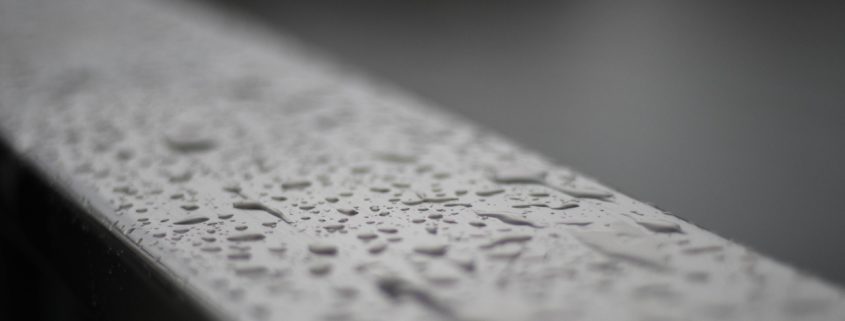Have you recently found yourself with a roof leak? Are you unsure of what steps you should take next in order to fix it?
Well, worry no more. We’ve come up with some tips to help you out.
Not only will a leaking roof make your tenants uncomfortable, but it will also damage your property if not taken care of quickly. When you notice that your roof is leaking, you should aim at fixing the problem immediately.
A well-maintained roof can last decades, so it’s in your best interests to take proper care of your commercial building to keep it in top shape.
Here are three essential steps to take when you notice the first signs of a leak.
1. Deal With The Interior Of The Property To Minimize Damage
When you have a roof leak, the first thing you need to do is minimize the interior damage, because water can destroy property and bring your business to a grinding halt.
Look for the dampest spot on your ceiling and make a small hole or remove the ceiling tile (which allows water to drain from your ceiling – do this in order to minimize damage).
After poking a hole in the ceiling, get a bucket, trash can or any container to collect the water. Place it strategically so that all the water gets in the bucket and empty the container on a regular basis.
Add a propping board in the bucket to reduce the annoying dripping sound from the water. This will help to buy you some time until a professional can come out to address the issue.
Damage from a continuous leak can lead to a number of other issues, and, if not addressed immediately, can lead to expenses that could have been otherwise been prevented.
Be sure to move any furniture that could be affected by the water, and if you can’t move it, cover the furniture with plastic sheets. (These will mitigate some of the damage that could happen.)
2. Locate The Entry Point Of The Water
Most often the spot where you’ll notice the water leaking from inside is not where the actual entry point is on the outside. If possible, try to take your time and locate where the water is coming from, and if you’re having difficulty, a professional will be able to hop on the roof and complete a thorough inspection.
Keep in mind, it’s (obviously) most common to notice a leak after it’s been raining, but if your building has a flat roof, standing water can slowly leak over the course of weeks.
3. Temporarily Address the Situation
After you’ve located where the leak is coming from, the next step is to try and prevent any further damage before the roofing contractor arrives.
Call a Professional
Even though this seems like an obvious tip, you’d be surprised at how many business owners DO NOT call at the first sign of a leak.
With proper roof maintenance and quick response to small problems, leaks can be addressed or even prevented.
Some of the best commercial roofing companies offer great preventative maintenance programs, and their goal is to build relationships with customers (aka business owners), helping them get the best out of their roof’s lifespan.
Qualified professionals will be able to address issues, discuss your roof’s life expectancy and give you some options for when the time comes to fully replace the roof.
Use Roof Cement
Cement can be added on the outside of the roof as well as the inside. After the cement is dry, you can do a water test to see if the leak is sealed. This is not a longterm fix to the issue though (it’s simply a bandaid), so ensure that you get a qualified commercial roofing contractor out to inspect the area ASAP.
Use Roofing Tape
Roofing tape is another way to implement an easy, temporary fix until you can get a roofing contractor out to your building. Roofing tape is available at any hardware store and is pretty inexpensive.
The roofing tape can also be used on the inside and outside your roof like roofing cement.
Use a Tarp
One highly recommended temporary fix while waiting for a professional contractor to arrive is the use of a tarp. Be warned though – this fix requires you to be confident and know what you are doing. If you are not careful, you might end up causing more damage to your roof then you originally had.
When using a tarp, you need to cut a large piece that will cover the roof damage. You should leave an extra four feet of the tarp around to ensure that you have covered the damage.
Take a 2 x 4 board and secure the tarp in place. Then nail the tarp to the boards to cover the damaged roof. You should be careful and ensure that the nails don’t go through the roof to prevent any further damage to it.
Bottom Line
Dealing with a leaky roof can be frustrating and it’s easy to get worked up by the fact that the leaking water can destroy your property.
When you notice a roof leak, aim to solve the problem right away. Contact us to hire a commercial roofing contractor and get quality service from trusted, local professionals.





